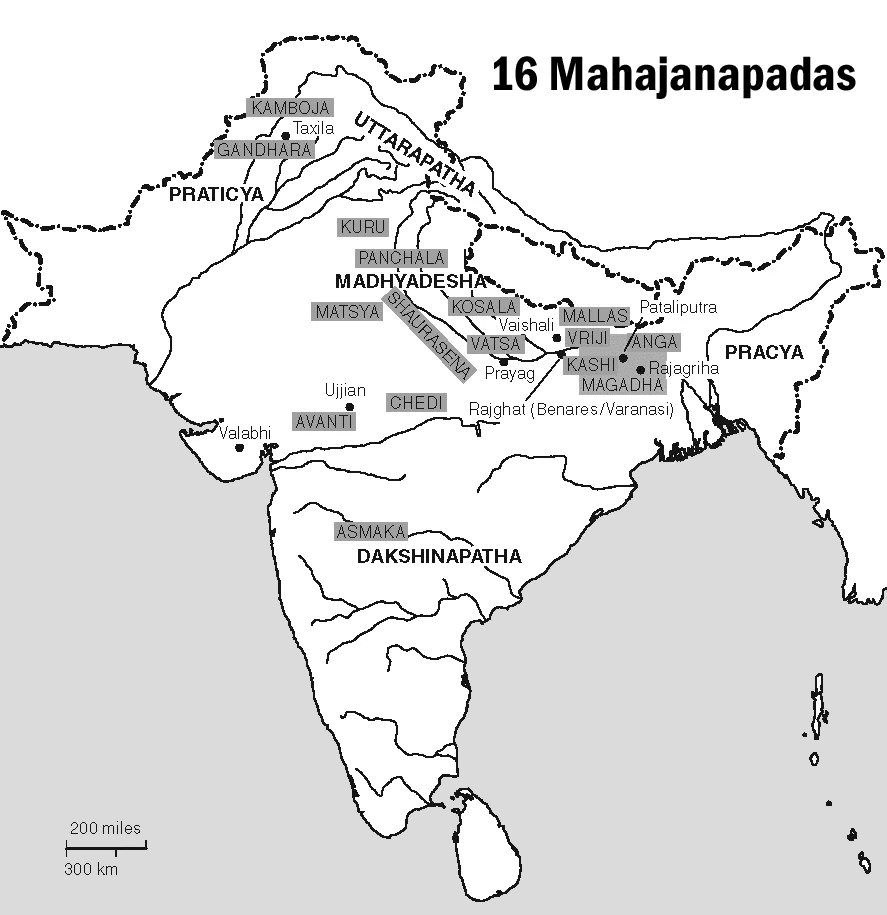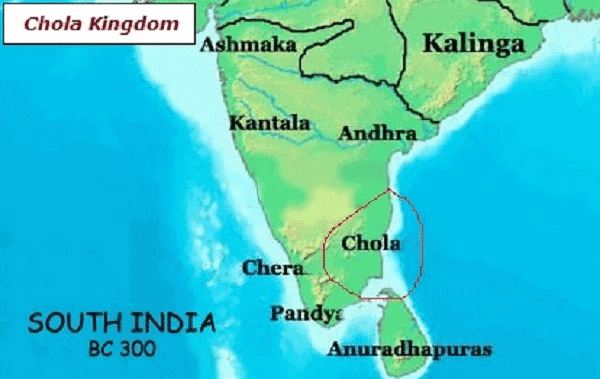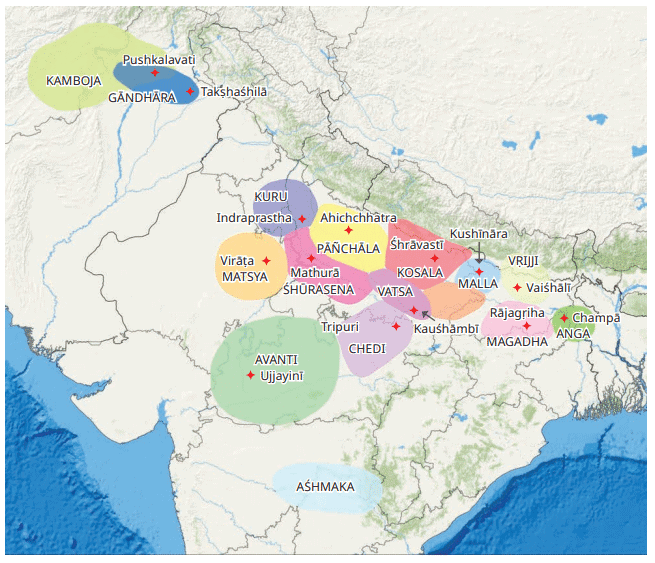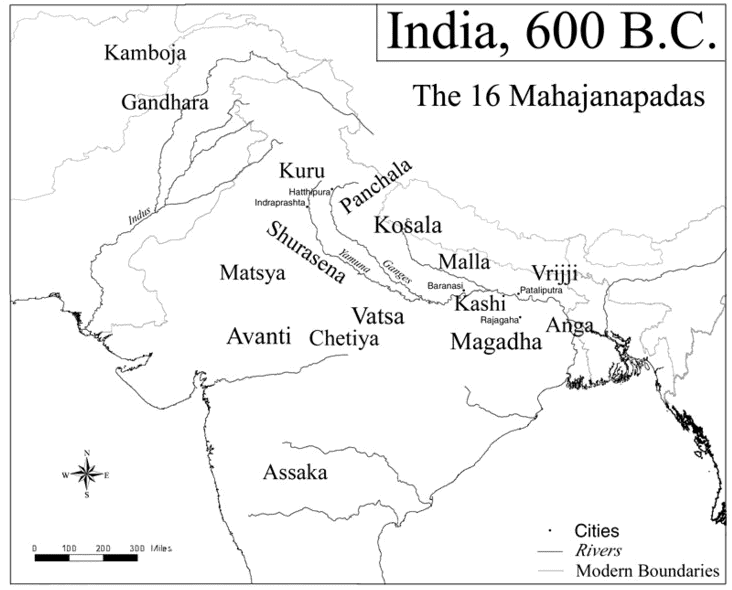Map Based Questions: New Beginnings: Cities and States | Social Science Class 7 - New NCERT PDF Download
Q.1: On the map, locate all the 16 mahajanapadas.
Ans: Here are the 16 Mahajanapadas:
- Aratta (modern-day Punjab)
- Anga (modern-day Bihar)
- Avanti (modern-day Malwa)
- Gandhara (modern-day Khyber Pakhtunkhwa)
- Kasi (modern-day Varanasi)
- Kamboja (modern-day Afghanistan)
- Kuru (modern-day Haryana and Uttar Pradesh)
- Lichchhavi (modern-day Nepal)
- Magadha (modern-day Bihar)
- Malla (modern-day Nepal)
- Pañchala (modern-day Haryana and Uttar Pradesh)
- Surasena (modern-day Rajasthan)
- Vajji (modern-day Bihar)
- Vatsa (modern-day Uttar Pradesh)
- Chedi (modern-day Madhya Pradesh)
- Yona (modern-day Afghanistan

Q.2: On the map, mark the regions of the Chola, Chera, and Pāndya kingdoms in southern India.
- Identify one resource from these regions that supported trade, as mentioned in the chapter.
- How did trade with overseas regions contribute to their urbanisation?
Ans: Mark Chola (eastern Tamil Nadu), Chera (Kerala), and Pāndya (southern Tamil Nadu).
Resource: Precious stones.
Trade Contribution: Trade in stones, gold, and spices with overseas regions brought wealth, enabling the growth of cities and urban infrastructure by 400 BCE.

Q.3: a) On the map, locate the capitals of the most powerful mahajanapadas:
- Magadha
- Kosala
- Vatsa
- Champa
- Matsya
- Avanti
b) On the map, locate Shishupalgarh and Kauśhāmbī and describe one feature of their fortifications.
Ans:

b) Shishupalgarh: Locate near Bhubaneswar, Odisha. Feature: Imposing fortifications with a moat and narrow gateways for controlled access. Urbanisation Support: Fortifications protected the city, ensuring safety for trade and population growth, fostering urban development.
Kauśhambi: Locate near Prayagraj, Uttar Pradesh. Feature: Well-fortified city with a moat outside rampart walls. Urbanisation Support: Defenses enabled a stable environment for commerce and governance, supporting urban life.
Q.4: On the map, locate and mark the Ganga River. Explain how these rivers contributed to the economic and urban development of the mahajanapadas, such as Magadha and Aśhmaka, as described in the chapter.
Ans: Mark the Ganga River (northern India, Bihar) and Godavari River (central India).
Contribution: The Ganga River supported Magadha’s economy by providing water for irrigation, enabling surplus agriculture, and facilitating trade transport, which fostered urban growth in cities like Rajagriha.

|
23 videos|272 docs|12 tests
|
FAQs on Map Based Questions: New Beginnings: Cities and States - Social Science Class 7 - New NCERT
| 1. What are the key factors that lead to the establishment of new cities in different states? |  |
| 2. How do maps help in understanding the geography of new cities and states? |  |
| 3. What role do government policies play in the development of cities and states? |  |
| 4. How can the establishment of new cities impact the environment? |  |
| 5. What are some challenges faced by newly established cities? |  |
















